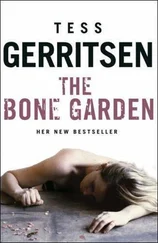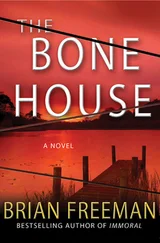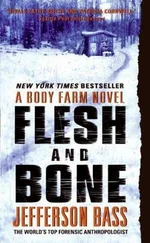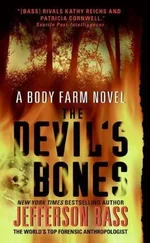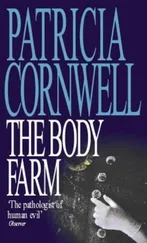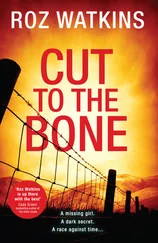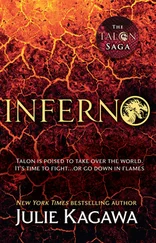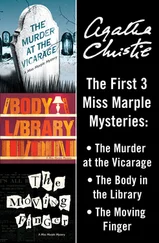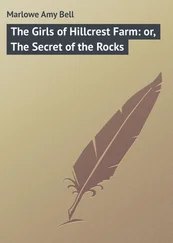
Dedication
To our loyal and encouraging readers, who’ve made these last ten years—and these first ten books—such a pleasure
Epigraph
And this is the forbidden truth, the unspeakable taboo—that evil is not always repellent but frequently attractive; that it has the power to make of us not simply victims, as nature and accident do, but active accomplices.
—JOYCE CAROL OATES
PROLOGUE
SOME WOUNDS HEAL QUICKLY,the scars vanishing, or at least fading to thin white lines over the years. Some assaults are too grave, though; some things can never be set right, never be made whole or healthy again, no matter how many seasons pass.
In this regard, wounded mountains are like wounded beings. Cut them deeply—slice off their tops or carve open their flanks—and the disfigurement is beyond healing.
So it was with Frozen Head Mountain, in the foothills of the Cumberland Mountains of East Tennessee. In the early 1960s, Frozen Head’s northern slope—thickly forested with hardwoods and hemlocks—was blasted and bulldozed away by wildcat strip miners to expose a thick vein of soft, sulfurous coal. Geologists called it the Big Mary vein, and for three years, Big Mary was illegally carved up, carted away, and fed into the insatiable maw of Bull Run Steam Plant, forty mountainous miles south. Then Big Mary’s vein ran dry, and the miners and their machines—their dredges and draglines and stubby, hulking haul trucks—departed as abruptly as they’d appeared.
They left behind a mutilated mountainside, naked and exposed, its rocky bones battered by the sun and the rain, the heat and the cold. After every rain, a witch’s brew of acids and heavy metals seeped from the ravaged slope, blighting the soil and streams in its path.
And yet; and yet. Nature is persistent and insistent. Years after the wildcatters moved on, kudzu vines began slithering into the shale, latching onto bits of windblown soil and leaves. Scrubby trees—black locust and Virginia pine—slowly followed, clawing tenuous toeholds in the rubble. A stunted sham of a forest returned, one instinctively shunned by birds and deer and even humans of right spirit.
And so it was the perfect place to conceal a body.
Like the mountain, the corpse was partially reclaimed by the persistence and insistence of Nature. A year passed, or perhaps two or three or five. One spring afternoon, a seedpod on a nearby black locust tree split open, and half a dozen dark, papery seeds wafted away on a warm mountain breeze. Five of the six seeds drifted and sifted into deep crevices in the shale. The sixth spun and swirled and settled into a neat oval recess: the vacant eye orbit of a now-bare skull. By summer the seed had germinated, sending pale tendrils of root threading down through fissures in bone and rock. One day a female paper wasp—a queen with no court yet—lighted on the skull, tiptoed inside, and began to build her small papery palace. And so was formed an odd ecosystem, an improbable peaceable kingdom: wasp colony, flowering tree, crumbling corpse.
The world contains a multitude of postmortem microcosms. Many remain forever undiscovered. But all leave some mark, some indelible stain, upon the world; upon the collective soul of mankind.
Some—a handful—give rise to reclamation or redemption.
PART 1
In the Beginning
And the earth was without form, and void; and darkness was upon the face of the deep.
—GENESIS 1:2
Now the serpent was more subtle than any beast of the field which the Lord God had made.
—GENESIS 3:1
SEPTEMBER 1992
CHAPTER 1
Brockton
TUGGING THE BATTERED STEELdoor of the office tight against the frame—the only way to align the lock—I gave the key a quick, wiggling twist. Just as the dead bolt thunked into place, the phone on the other side of the door began to ring. Shaking my head, I removed the key and turned toward the stairwell. “It’s Labor Day,” I called over my shoulder, as if the caller could hear me. “It’s a holiday. I’m not here.”
But the phone nagged me, scolding and contradicting me, as if to say, Oh, but you are . I wavered, turning back toward the door, the key still in my hand. Just as I was about to give in, the phone fell silent. “Thank you,” I said and turned away again. Before I had time to take even one step, the phone resumed ringing. Somebody else was laboring on Labor Day, and whoever it was, they were damned determined to reach me.
“All right, all right, ” I muttered, hurrying to unlock the bolt and fling open the door. “Hold your horses.” Leaning across the mounds of mail, memos, and other bureaucratic detritus that had accumulated over the course of the summer, I snatched up the receiver. “Anthropology Department,” I snapped. The phone cord snagged a stack of envelopes, setting off an avalanche, which I tried—and failed—to stop. I’d been without a secretary since May; a new one was scheduled to start soon, but meanwhile, I wasn’t just the department’s chairman; I was also its receptionist, mail sorter, and answering service, and I was lousy at all of those tasks. The envelopes hit the floor and fanned out beneath the desk. “Crap,” I muttered, then, “Sorry. Hello? Anthropology Department.”
“Good mornin’, sir,” drawled a country-boy voice that sounded familiar. “This is Sheriff Jim Cotterell, up in Morgan County.” The voice was familiar; I’d worked with Cotterell on a murder case two years before, a few months after moving to Knoxville and the University of Tennessee. “I’m trying to reach Dr. Brockton.”
“You’ve got him,” I said, my annoyance evaporating. “How are you, Sheriff?”
“Oh, hey there, Doc. I’m hangin’ in; hangin’ in. Didn’t know this was your direct line.”
“We’ve got the phone system programmed,” I deadpanned. “It puts VIP callers straight through to the boss. What can I do for you, Sheriff?”
“We got another live one for you, Doc. I mean, another dead one.” He chuckled at the joke, one I’d heard a hundred times in a decade of forensic fieldwork. “Some fella was up on Frozen Head Mountain yesterday, fossil hunting—that’s what he says, leastwise—and he found some bones at a ol’ strip mine up there.”
I felt a familiar surge of adrenaline—it happened every time a new forensic case came in—and I was glad I’d turned back to answer the phone. “Are the bones still where he found them?”
“Still there. I reckon he knew better’n to mess with ’em—that, or he didn’t want to stink up his jeep. And you’ve got me and my deputies trained to leave things alone till you show up and do your thing.”
“I wish my students paid me as much mind, Sheriff. Have you seen the bones? You sure they’re human?”
“I ain’t seen ’em myself. They’re kindly hard to get to. But my chief deputy seen ’em yesterday evening. Him and Meffert—you remember Meffert? TBI agent?—both says it’s human. Small, maybe a woman or a kid, but human for sure.”
“Meffert? You mean Bubba Hardknot?” Just saying the man’s name—his two names, rather—made me smile. The Tennessee Bureau of Investigation agent assigned to Morgan County had a mouthful of a name—Wellington Harrison Meffert II—that made him sound like a member of Parliament. His nickname, on the other hand—“Bubba Hardknot”—sounded like something from a hillbilly comic strip. The names spanned a wide spectrum, and Meffert himself seemed to, also: I’d found him to be intelligent and quick-witted, but affable and respectful among good old boys like Sheriff Cotterell. “Bubba’s a good man,” I said. “If he says it’s human, I reckon it is.”
Читать дальше


